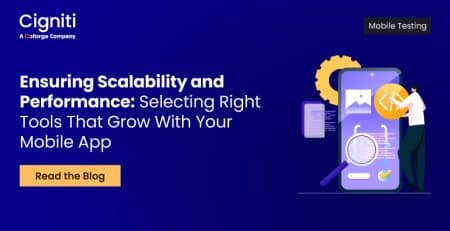How Digital Assurance & Testing Help Build Agile Enterprises?
Pokemon Go has been creating buzz since July 2016 post its launch in select countries and is by far the most popular mobile game in the US history. Numbers and popularity charts could be working out for Nintendo, however, some enterprise-level IT security managers have a different take on this app. While the trend of getting hi-end mobile devices and related accessories at workplaces continues, gaming apps like Pokemon Go are fizzing concerns around Server hacks, unauthorized permissions, and more.
Though Pokemon Go seems like a recent and peculiar threat, industry enthusiasts opine that any such application loaded on a personal device within an enterprise can pose a potent risk.
There is a chaotic hustle around making enterprises/workplaces more Agile and flexible to drive productivity and ease of operation for employees. Bring Your Own Device (BYOD) is considered as a catalyst for making enterprise more user-friendly, flexible and more responsive. While we say so, the major challenge is for the IT security teams with issues concerning the overall implementation of policies and effective security measures to determine and manage security lapses.
As they say, Bring Your Own Device; Not your own Virus!
Ready for an Agile boost?
The Agile Manifesto published in 2001 by a niche group of IT leaders evaluates the core principles of an Agile set-up for any enterprise. Fundamental question posed, Is your enterprise ready for the Agile run?
The underlying principles mentioned to asses or determine the impact of Agile implementation within an enterprise are organizational culture, working style and overall attitude, which will prove to be a digital enabler in the current high-speed, competent, and self-made digital economy.
With phenomenal changes across world economies and overall customer experience, businesses and organizations are being pushed towards the edge of the profit churning cycle. There is a growing need to redefine the way the workforce operates and delivers. Policies and processes that enable speed and better accessibility will gain momentum in serving their customers (both internal and external) better.
Thanks to the changing dynamics of consumer expectations, businesses are getting more flexible and robust with their systems at the same time.
Getting ‘digitally’ Agile
A recent Gartner research infers that almost 42% of organizations are expected to increase the spending on mobile app development by an average 31% in 2016. Digital technologies are today connecting enterprises, redefining the work dynamics, and addressing almost every aspect of the business operations.
At a recently held ASEAN Business and Investment Summit (ABIS) 2016 in Vientiane, Laos, President and Managing Director of Bosch Southeast Asia Martin Hayes said, “We need effective leadership to overcome the challenges in an uncertain environment. Both business and political leaders should possess the knowledge and capability to be agile, adaptable and resilient” The session was based on the theme ‘The Future of Technology – Focusing on the Digital Economy’.
As the work environment gets digital and more connected, there is a focussed requirement for flawless user experience and robust security measures. What integrates and orchestrates every digital element together is ‘Digital Assurance’.
Digital Assurance enables every device, application, Web / Mobile platform to interact seamlessly within the ecosystem. The ultimate outcome is smooth and undivided user/ customer engagement that leads to the desired action. At the same time, the user should be assured about the data and system’s security from any probable hacking attempt.
Taking into perspective the security aspects and user experience, the need for Digital Assurance and testing has taken a massive leap. It is a critical piece in the overall Digital Transformation and Digital Assurance jigsaw.
With digital technology touching every aspect of the business operations, Digital Assurance & testing has got highlighted as a front-end function that is rapidly influencing the product / application’s design and development.
Digital Assurance & Testing for sustained and secure growth strategy
In 2015, Starbucks faced a major software glitch due to an ‘internal failure’, which resulted in 60% of stores in the US & Canada getting shut down. The failure took place during a routine refresh, where stores were unable to process payments and at a point of time even gave away the coffee for free. Practically, the registers were used to place orders and store cash. Eventually, it accumulated extensive data to carry out tasks like processing credit cards, placing orders at kitchens and keep a track of the loyalty programs.
Instances like these can cause nightmare for international brands that are digitally connected and depend on the digital platform for their survival. Assuring the performance of such systems with robust testing strategy is indispensable.
An enterprise can get Agile, but at what cost?
Answer to this ever-provoking question is Digital Assurance. Understanding the implications and benefits of Digital Assurance & testing in an organization’s digital landscape is critical and definitely the need of the hour!
Concurrently, it is important to ensure that the right testing strategy is adopted to get required results. Here, we try and address a few of them:
- Quality models for the digital era:
The Digital era is redefining the role of testing in the overall development landscape. With new age methods like Shift-left, testing is taking a holistic view and understanding various dimensions of consumer experience. Resultantly, there is a growing need to adopt the best and contemporary testing technologies to check issues/bugs within the digital sphere.
- Omni-channel testing:
Omni-channel application testing focuses on the ensuring enhanced digital experience of the users. Aspects like performance, ease of use and functionality play a key role for any successful user experience. Omni-channel interactions work profoundly for connected devices and multiple digital touch points.
- Testing solutions for agile projects:
Within an agile environment, the testing needs have to align with the intrinsic requirements. Test Automation with Service Virtualization work effectively to minimize the glitches and minimize downtime.
- Cloud for testing:
Cloud and virtual environment for testing are increasingly getting effective for testing applications / solutions that can accelerate performance and ensure seamless integration. So, there is a growing demand for cloud-based and virtualized environment for testing large scale enterprise applications.
Enterprises are getting more connected with the sole push to get more agile. Digital Assurance is an ever-rising need for ensuring performance in this connected environment. In terms of testing strategy, there will always be a compulsive need to bring quality, automation and foresight while deploying business critical applications.
Cigniti has worked with enterprises of all shapes and sizes and has brought them to speed in this digitally charged and connected ecosystem. Global enterprises have leveraged Cigniti’s frameworks for continuous test automation and performance testing to improve their Quality Assurance and Testing practices.
Connect with Cigniti experts to get your business digitally Agile.





Leave a Reply